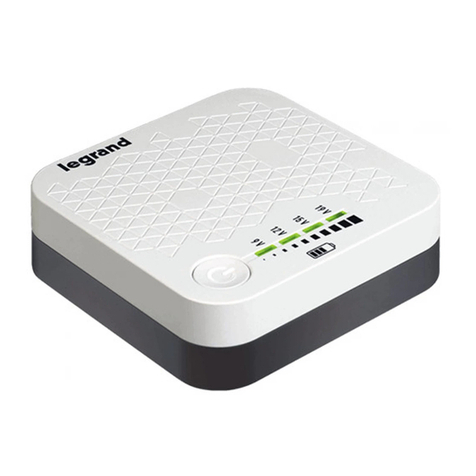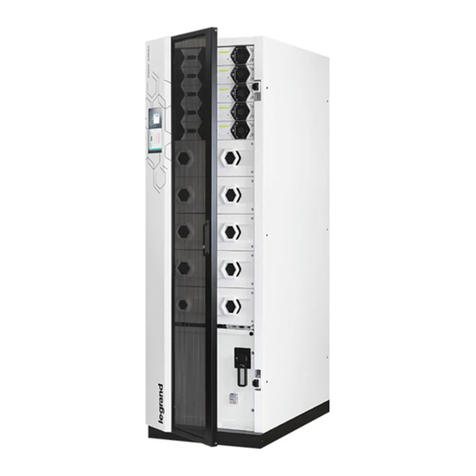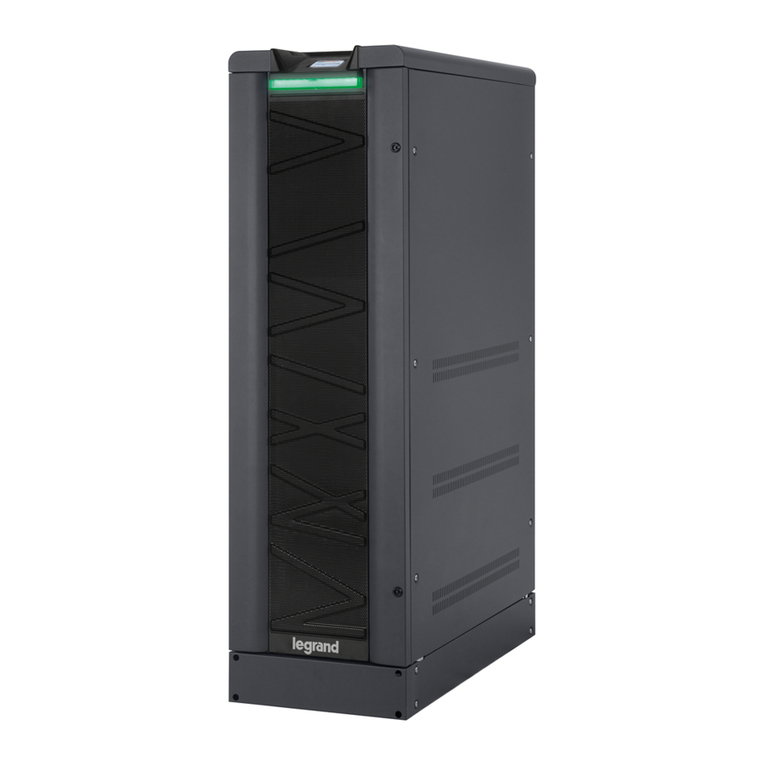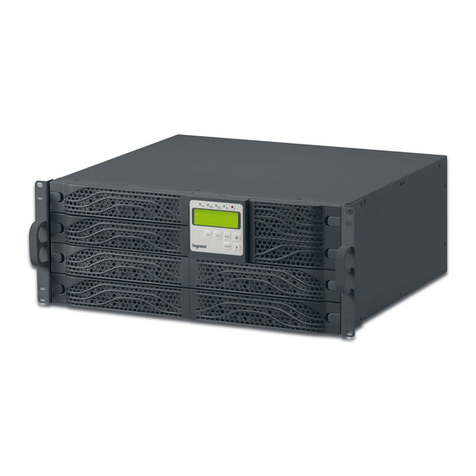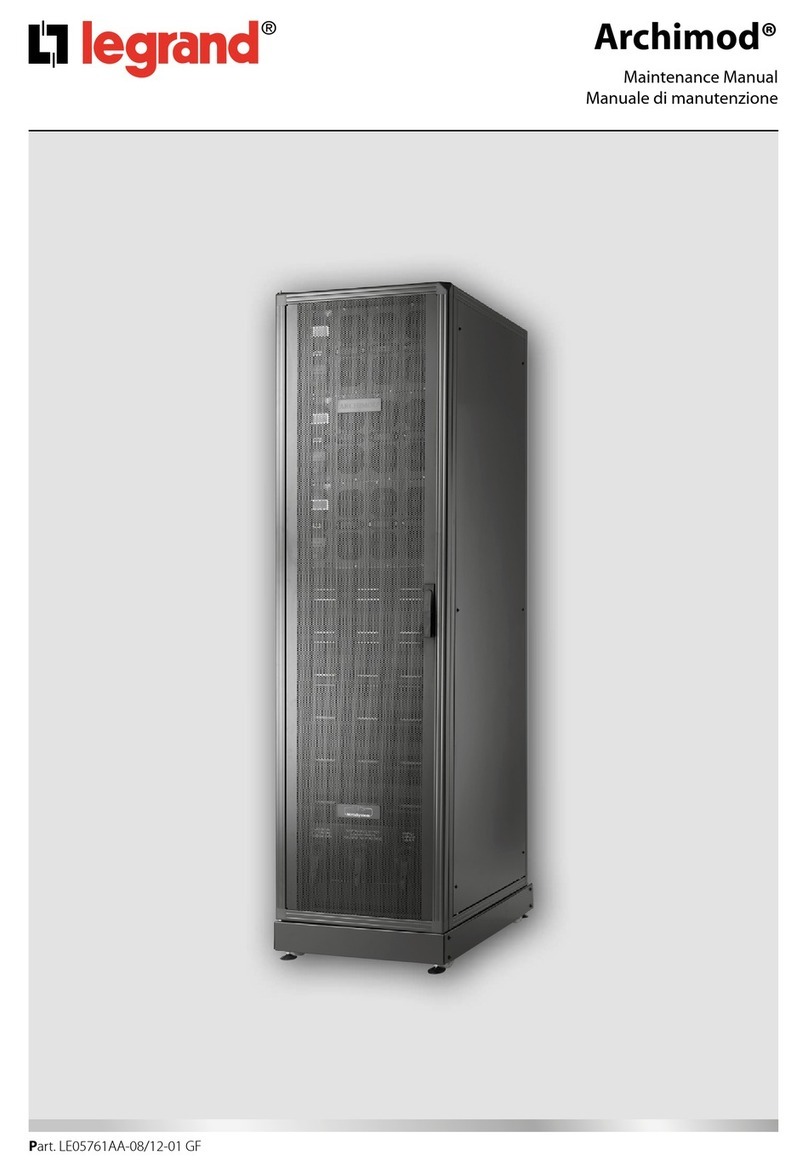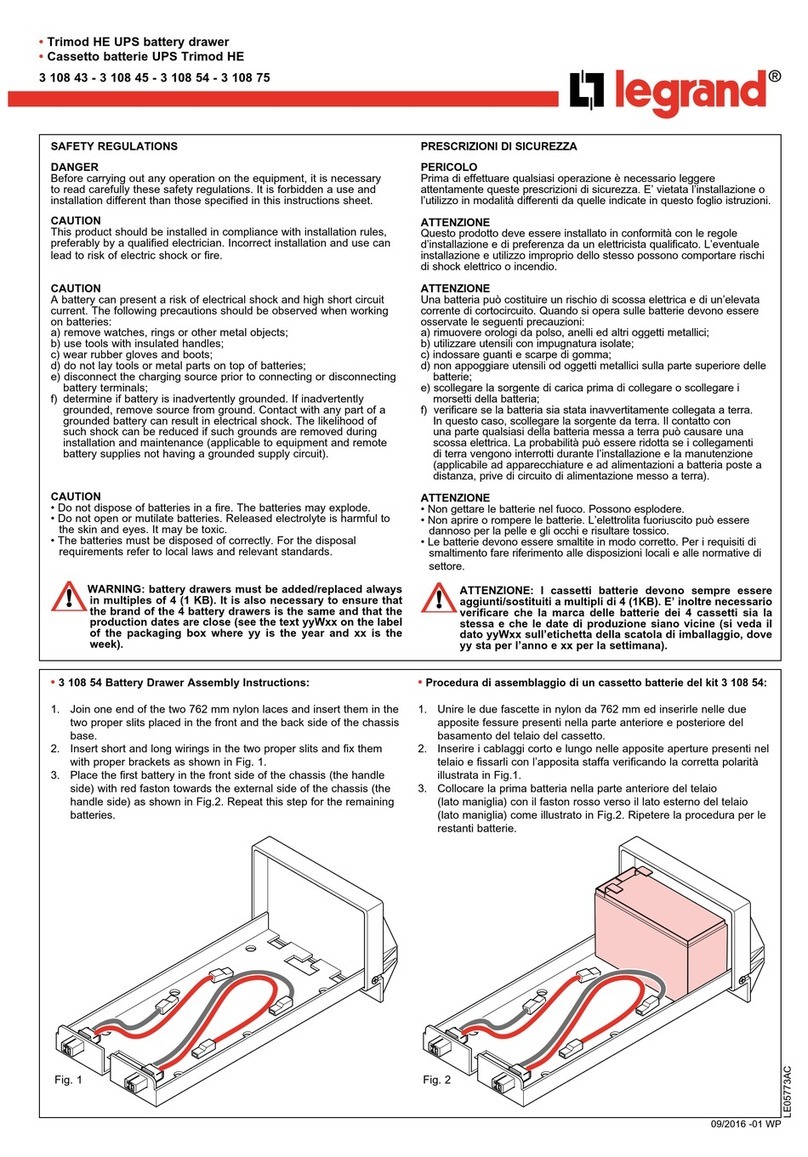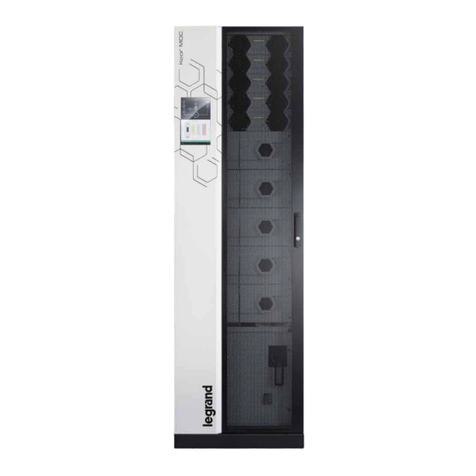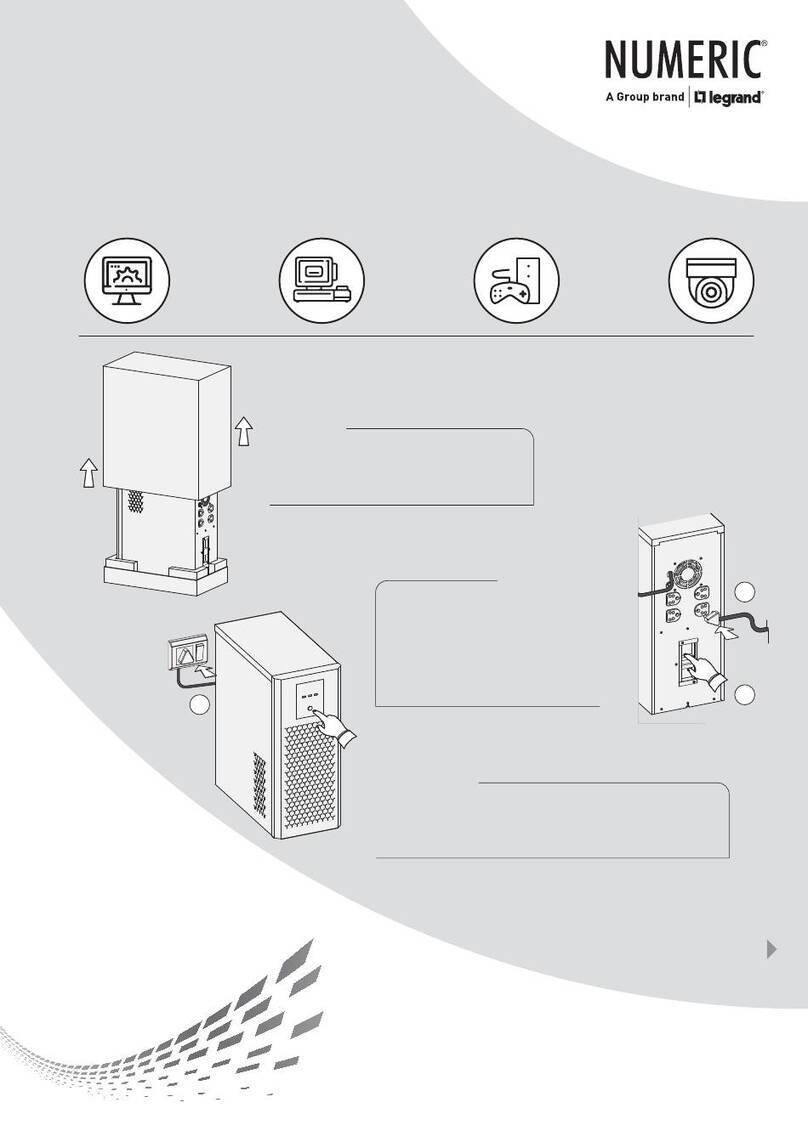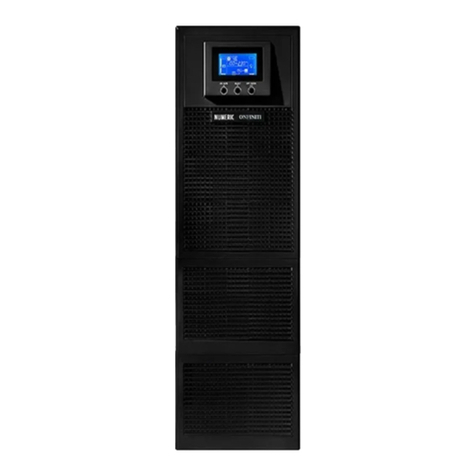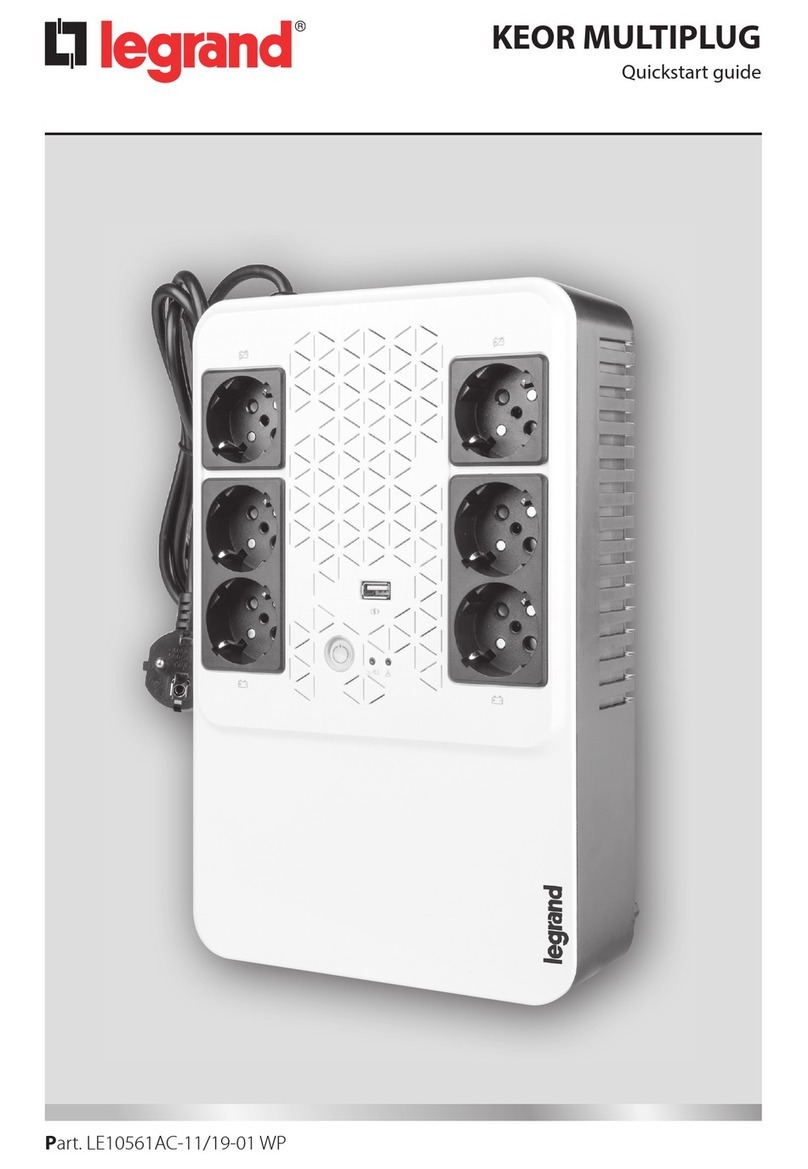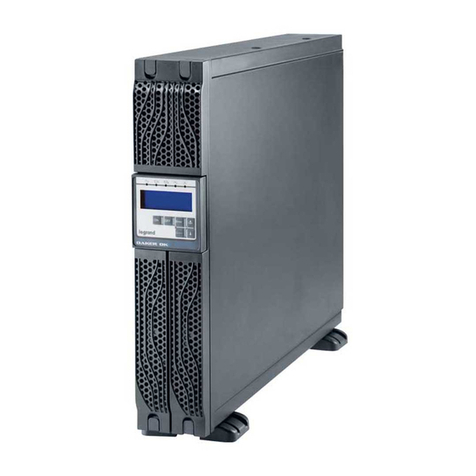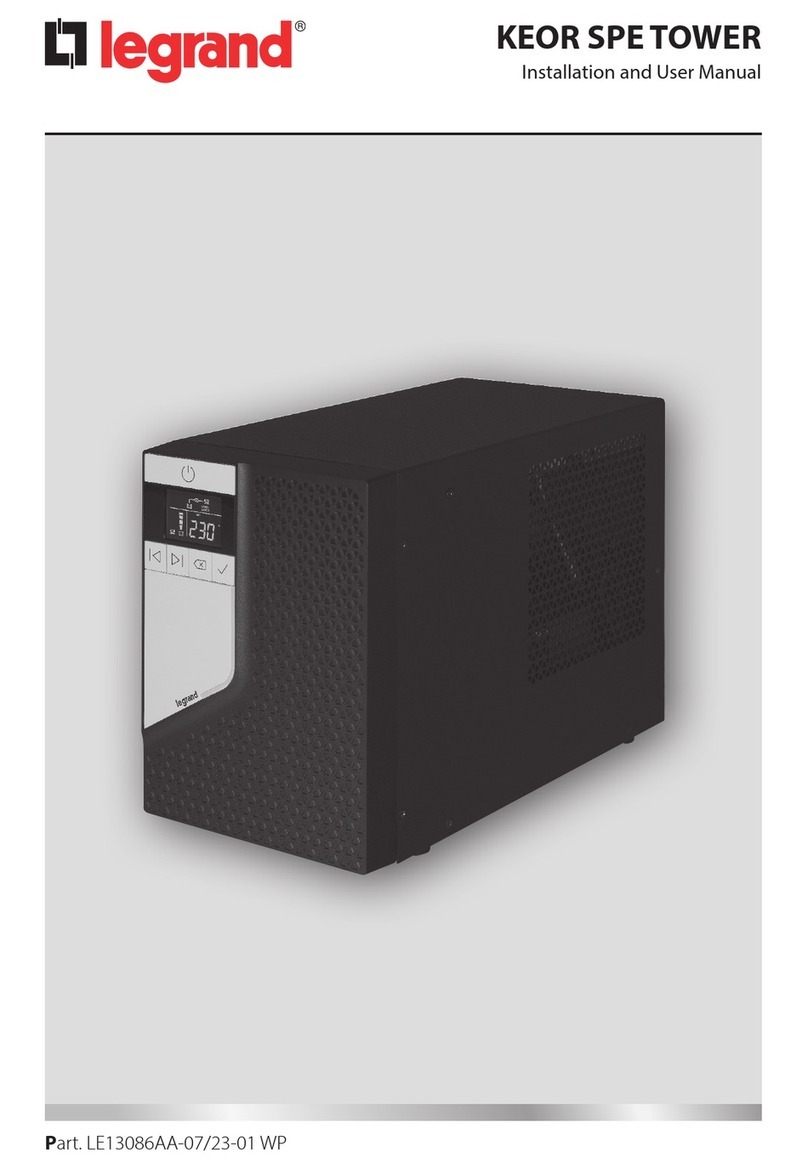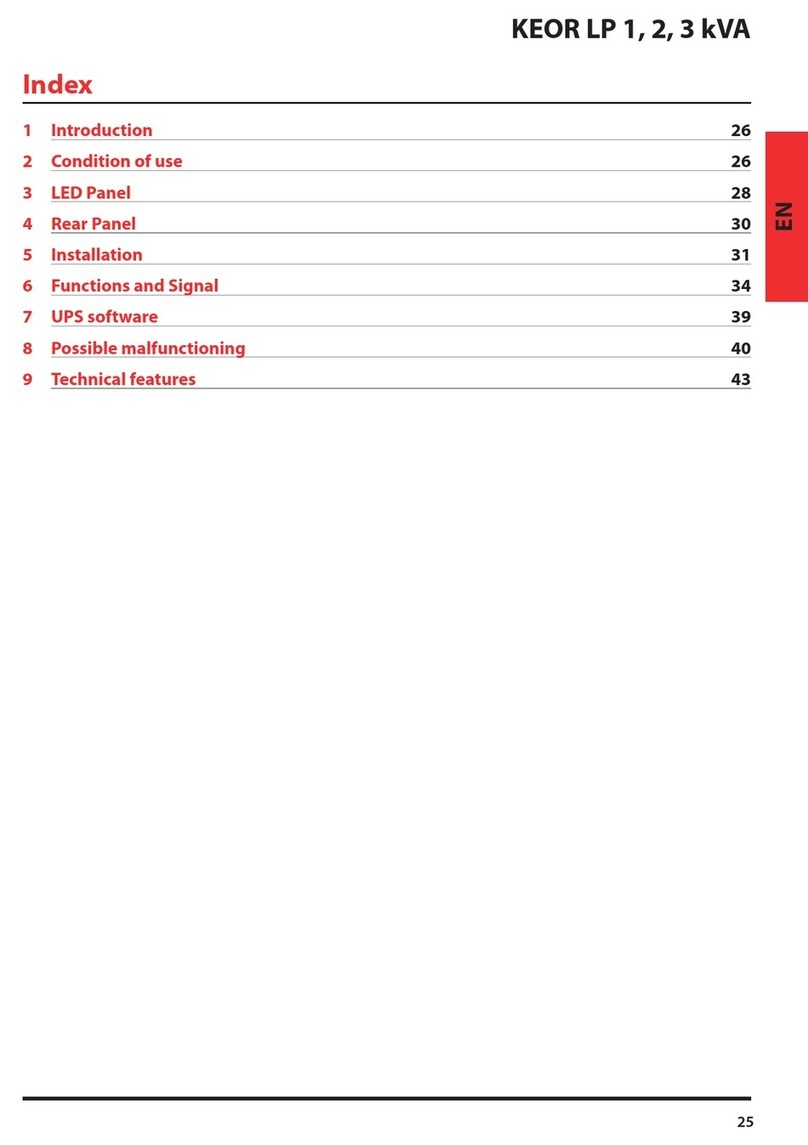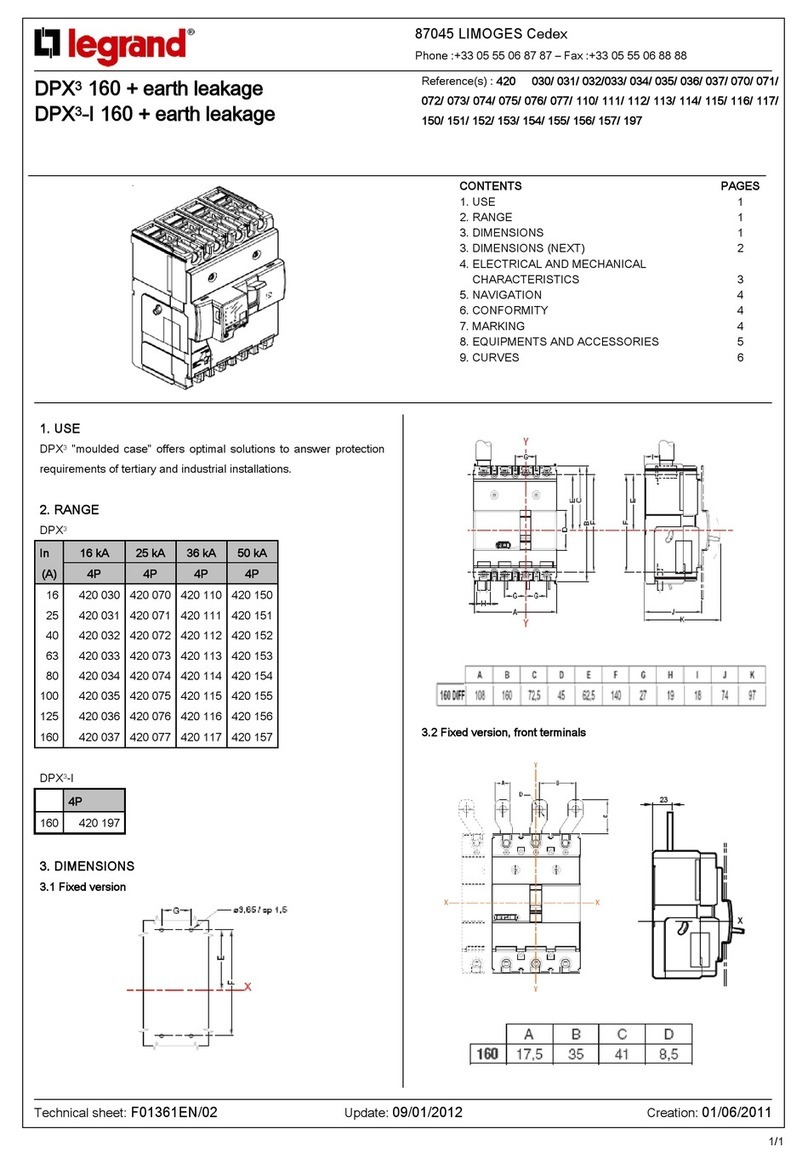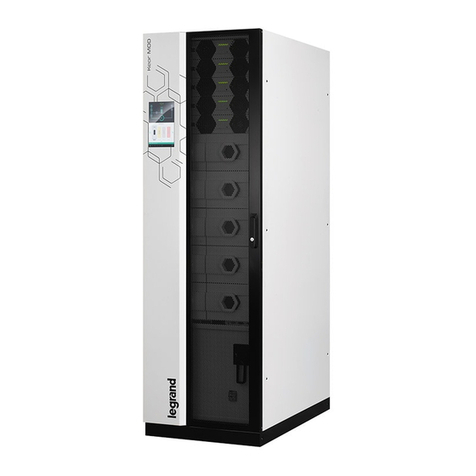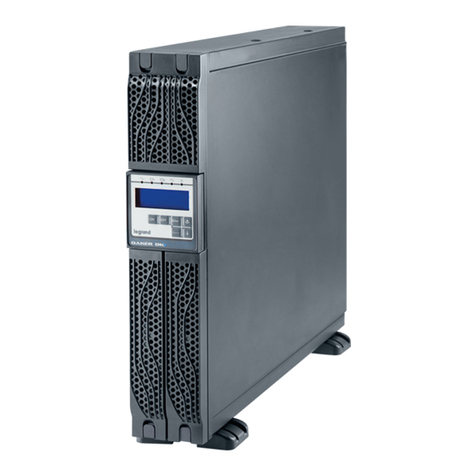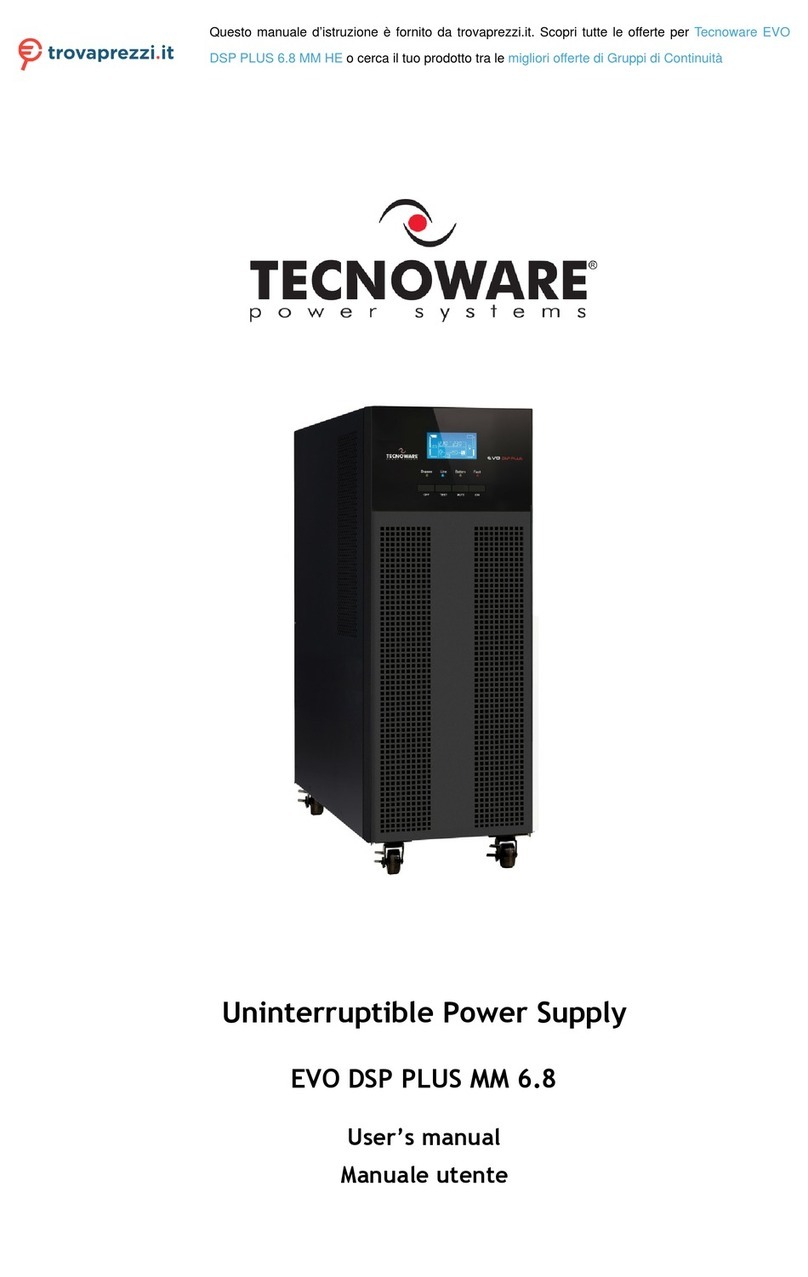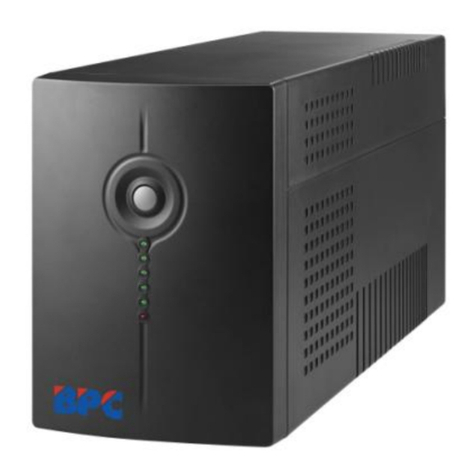
2
Test
Connect the input cable to the mains power supply, connect a load to the UPS output
(e.g. a lamp), EPO (if necessary) (Normally Closed – NC) and, with the UPS switched off,
check the following:
- bypass switch in position I (yellow light on) - the load receives power;
- bypass switch in position 0 (yellow light off) - the load receives no power;
- push the EPO button and check that the UPS switches off.
Switch on the UPS and check that the load receives power when the bypass switch is
in both positions. If this does not take place, check the connection of the cables, the
supply voltage rating and that the bypass is fully inserted into the UPS socket.
Use of the bypass in normal operating conditions
When the UPS is operating in normal conditions, the bypass switch must remain in
position 0 (UPS) and EPO contact closed.
NOTE: Never leave the bypass switch in position I during normal UPS operation: the
load is not protected in case of a mains supply blackout because the UPS output is
not connected.
Use of the bypass for service
To disconnect the UPS:
- commute the bypass switch to position I.
- switch off the UPS.
- Unscrew the fixing screws on the bypass and then remove the bypass from the UPS
socket.
NOTE: the load now receives power directly from the mains power supply. If the
bypass switch is put to position 0 (UPS), the power supply to the load will be
interrupted.
To reconnect the UPS:
- replace the bypass into the UPS socket (refer to point 8 of the installation
procedure).
- switch on the UPS.
- commute the bypass switch to position 0.
Collaudo iniziale
Collegare il cavo di ingresso alla rete, collegare un carico di segnalazione all’uscita
(es. una lampada) e l’eventuale EPO (Normalmente Chiuso – NC) e con UPS spento
verificare che:
- con l’interruttore in posizione I (spia gialla accesa), il carico sia alimentato;
- con l’interruttore in posizione 0 (spia gialla spenta), il carico non sia alimentato;
- premere il pulsante di EPO e verificare lo spegnimento dell’UPS.
Accendere l’UPS e verificare che, con l’interruttore in entrambe le posizioni, il carico sia
sempre alimentato. Nel caso che il comportamento non sia quello indicato, controllare
i collegamenti dei cavi, la tensione della rete di alimentazione e che la presa dell’unità
bypass sia ben inserita.
Modo d’uso normale
Quando l’UPS viene utilizzato nel modo normale tenere l’interruttore del bypass in
posizione 0 e contatto EPO chiuso.
ATTENZIONE: Non lasciare mai l’interruttore nella posizione I durante il modo d’uso
normale, perché, in caso di interruzione dell’alimentazione da rete, l’UPS non é
collegato all’uscita.
Modo d’uso service/manutenzione
Per scollegare l’UPS:
- Portare l’interruttore del bypass in posizione I.
- Spegnere l’UPS.
- Togliere l’unità bypass dal retro dell’UPS, togliendo prima le viti di fissaggio, sfilare
poi il bypass dalla presiera.
ATTENZIONE: in questa condizione i carichi sono alimentati direttamente da rete,
portando l’interruttore nella posizione 0 si interrompe l’alimentazione al carico.
Per ricollegare l’UPS:
- reinserire l’unità bypass (vedi punto 8 dell’installazione).
- accendere l’UPS.
- portare l’interruttore del bypass in posizione 0.
Проверка
Присоедините входной кабель к источнику сетевого питания, присоедините
нагрузку (например, лампу) к выходу ИБП, при необходимости подключите к входу
аварийного отключения питания размыкающий контакт кнопочного выключателя.
Убедитесь, что ИБП находится в отключенном положении и проверьте следующее:
- байпас находится в положении «I» (сеть электропитания) - желтый светодиод
горит - нагрузка находится под напряжением;
- байпас находится в положении «0» (ИБП) - желтый светодиод не горит - нагрузка
обесточена;
- нажмите кнопку аварийного отключения электропитания и убедитесь, что ИБП
отключен.
Включите ИБП и убедитесь в том, что нагрузка находится под напряжением в
обоих положениях байпаса. Если это не так, то проверьте подключение кабелей,
значение напряжения питающей сети и убедитесь в том, что разъем байпаса
полностью вставлен в гнездо ИБП.
Использование байпаса в нормальном режиме работы ИБП
Если ИБП работает в нормальном режиме, то выключатель байпаса должен
находиться в положении «0» (ИБП), а контакт на входе аварийного отключения
питания замкнут.
ПРИМЕЧАНИЕ. Если ИБП работает в нормальном режиме, то оставлять
выключатель байпаса в положении «I» (сеть электропитания) не следует. В этом
случае при возникновении перерыва электропитания нагрузка не защищена,
поскольку выход ИБП не соединен с нагрузкой.
Использование байпаса для обслуживания
Для отсоединения ИБП:
- переведите выключатель байпаса в положение «I» (сеть электропитания).
- отключите ИБП
- выкрутите крепежные винты на байпасе и извлеките разъем байпаса из гнезда
ИБП.
ПРИМЕЧАНИЕ. В этом положении нагрузка получает электропитание
непосредственно от сети. Если перевести выключатель байпаса в положение
«0» (ИБП), то электропитание на нагрузку подаваться не будет.
Для восстановления соединения с ИБП:
- вставьте разъем байпаса в гнездо ИБП (см. п. 8 процедуры установки)
- включите ИБП
- переведите выключатель байпаса в положение «0» (ИБП).
Technical data / Caratteristiche tecniche / Технические данные
3 108 77
Megaline/1 Bypass
Байпас Megaline/1
3 108 78
Megaline/2 Bypass
Байпас Megaline/2
Input Voltage / Tensione d’ingresso / Входное напряжение 184 - 265V / 184 - 265 В 184 - 265V / 184 - 265 В
Output Voltage / Tensione d’uscita / Выходное напряжение 184 - 265V / 184 - 265 В 184 - 265V / 184 - 265 В
Input & Output current / Corrente ingresso e uscita /
Выходной и выходной ток 23 A max / 23 A макс. 44 A max / 44 A макс.
Max UPS power / Potenza commutabile /
Максимальная мощность ИБП 5000VA / 5000 ВА 10000VA / 10 000 ВA
Protection Fuses / Fusibili di protezione / Предохранитель 1 pc 10x38 aR 32A 600V /
n.1 10x38 aR 32A 600V
2 pcs 10x38 aR 40A 600V /
n.2 10x38 aR 40A 600V
Degree of Protection / Grado di protezione / Степень защиты IP 20 IP 20
Size / Dimensioni / Размеры 240x145x59 mm / 240x145x59 мм 240x145x59 mm / 240x145x59 мм
